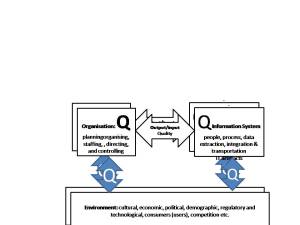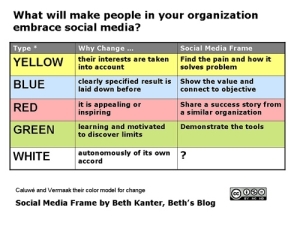The assessment of information system in the organisation is not well established and the studies show that more research is needed (DeLone & Mclean, 1992; Clark, 1992; Saunders & Jones, 1992; Wells & Wilkes, 1988 ). The IS performance and the organisational performance should be equally and carefully exploreAlso some of the roles of the IS function in the organisation are linked and can be subtle and difficult to measure (Crowton & Treacy, 1986; Niederman et al.). What is required for IS measurement framework is an assessment which connects the organisational performance to IS. The measurement should incorporate all the surrounding functions and factors in order to meet the need of both the organisation and customers.
Studies of IS assessment were initially focused on economic consideration(Ahituv, 1980; Bender, 1986Martin, 1979; the measurement focus shifted from efficiency, ie doing the things rightly, to effectiveness which is doing the right things McLean, 1973,B. Myers et tal, 1997.
Development of IS measurement.
The literature holds that Moad , 1993 presented a 3 by 3 matrix of IS framework for evaluating the IS functions (B. Myers et tal, 1997). Others have developed IS assessment framework (Dickson et al, 1988; Wells, 1987). However the most recent and comprehensive framework was developed by DeLone & McLean (1992) for IS multidimensional Model which was popular for measuring the complex IS ‘independent variable’. This model combines major previous IS Models theories and research studies to produce a multidimensional model called the D & M Success Model shown below in fig3.
Fig 3. D & M Success Model (DeLone & McLean, 1992)
In the IS model in fig 3 above there are 6 interrelated dimensions of information systems success, comprising the system quality, information quality, service quality, use, user satisfaction, net benefits (DeLone & McLean, 1992). It is also noted that in this model the elements are interconnected and interrelated in their functions. According to Delone & McLean the IS success Model the “Systems quality” measures the systems technical success. The “information quality” measures the semantic success and the rest of the 4 components; the “use, user satisfaction, individual impacts and organisational impacts” measure the effectiveness success.
There are 3 steps in the “temporal process” of the D & M model, comprising of the following: 1. creation of a rich information system which exhibits varying degrees of information quality; 2. Users of this system are categorised as satisfied or dissatisfied with the information; Thus the individual user is impacted by the use of the system and its information and these individual users collectively impact the organisation which results to certain conditions (DeLone & McLean, 1992)
Also a “causal model studies the covariance of the success relationship to determine if there is a causal relationship in the dimensions. This is whether higher system or information quality results to higher use and user satisfaction to impact the individual and finally the organisation positively or the other way round (DeLone & McLean, 1992). The D & M model establishes the relationships between the components of the models and indicating the interdependencies among the variables of the IS ( Seddon and Kiew, 1996) Also the causal chain is a rigid presumption that higher quality will result to greater satisfaction and impact. What of other environmental factors which affect both the customers and the business.
With this review we shall compare and modify our previous framework in fig 2 in order to accommodate all the prevailing factors and eliminate all the weaknesses. See the comparative view. Fig4.
DeLone, W., and McLean, E. Information systems success: The quest for the dependent variable. Information Systems Research, 3, 1 (1992),
Seddon, P.B. A respecification and extension of the DeLone and McLean model of IS success. Information Systems Research, 8, 3 (1997),
P.B., and Kiew, M.-Y. A partial test and development of the DeLone and McLean model of IS success. In J.I. DeGross, S.L. Huff, and M.C. Munro (eds.), Proceedings of the International Conference on Information Systems. Atlanta, GA: Association for Information Systems, 1994, pp. 99–110.30 DELONE AND MCLEAN






